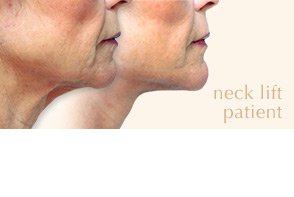Can I Get Liposuction on My Legs? A Board Certified Plastic Surgeon Answers Your Top 7 Questions About Fat Reduction

Liposuction reigns as one of the most popular cosmetic surgery options year after year—and it’s not surprising why. This versatile fat reduction procedure can yield dramatic results nearly anywhere on the body, helping patients reduce stubborn areas of fat and improve body contours.
While its popularity is unquestionable, there are still many things about liposuction that patients wonder about. To provide a bit more detail about the procedure, I’ve answered 7 of the most common liposuction questions I have received lately.
- How much does liposuction cost?
- Do I need liposuction or a tummy tuck?
- Can I get liposuction on my legs?
- How big are liposuction scars?
- When can I work out after liposuction?
- When will I see liposuction results?
- Can liposuction reduce my buffalo hump?
1. How much does liposuction cost?
Liposuction typically costs anywhere between $2,000 – $10,000+ depending on where you are having it performed and how many areas are being treated at once.
Liposuction is used only to reduce excess fat and sculpt a more attractive contour—it will not address sagging skin.
The price of liposuction varies so greatly because it can be used for sculpting both large and small areas of the body. For example, using liposuction to minimize a double chin or reduce fat above the knee will cost less than having liposuction to reduce love handles or tummy fat.
When you go in for a liposuction consultation, your plastic surgeon should provide you with a comprehensive fee quote based on your specific needs.
2. Do I need liposuction or a tummy tuck?
Many patients are unsure which procedures are the right choice for them when it comes to reducing fullness and sagging in the abdominal area. Liposuction is used only to reduce excess fat and sculpt more attractive contours—it will not address sagging skin and can actually exacerbate the appearance of drooping because it reduces fullness under the skin.
If you have skin laxity or a protruding abdomen (including the musculature), a tummy tuck will be a much better choice. During a tummy tuck procedure, excess skin is removed, underlying muscles are repositioned, and the remaining skin is pulled taut for a flatter, slimmer stomach. Liposuction is often used in conjunction with a tummy tuck to refine and smooth the results.
3. Can I get liposuction on my legs?
Yes; liposuction can be performed virtually anywhere on the body provided there is enough fat to warrant treatment and the surgeon can access the area. Many patients opt to slim down excess fat on the outer thighs (“saddlebags”), bulges around the knee, inner thigh fullness, and even reduce thickness at the ankle (“cankles.”)
After your procedure, your surgeon will provide you with specific aftercare instructions—and the biggest gift you can give yourself is to follow them.
4. How big are liposuction scars?
The incisions needed for liposuction are typically very small, around 2-4mm in length—your surgeon just needs enough room to insert the cannula and shape the treatment area. To improve access, surgeons will make multiple incisions strategically placed rather than lengthen the original incision.
Surgeons also work to inconspicuously place the needed incisions, either within a natural skin fold, in an area with a change of pigment, or where they will be easily hidden by clothing. With proper wound-care and by following your surgeon’s instructions to a T, it’s likely you won’t notice your liposuction scars once you have fully healed.
5. When can I work out after liposuction?
Again, this will also depend on the specifics of your procedure. As a rule of thumb, you should give your body at least two to three weeks before strenuous exercise. In the initial stages of healing, it’s important to avoid activities that noticeably raise your heart rate and blood pressure, which can easily increase the chance of complications. It’s also crucial to avoid actively straining your healing incisions.
After your procedure, your surgeon will provide you with specific aftercare instructions—and the biggest gift you can give yourself is to follow them. While a bit of lipo under the chin may only keep you out of the gym for two weeks, you may need to skip exercise for a month or more if treatment involved larger areas of the body.
That being said, I encourage patients to get up and do some very light walking the evening after surgery to encourage good blood flow, so you won’t be totally sedentary while you are healing—still, you need to take it easy and go slowly.
6. When will I see liposuction results?
Immediately after liposuction, many patients are disappointed to find they look plumper than before surgery. Don’t be alarmed: this plumpness is due to post-operative swelling, a temporary condition which will subside after the initial healing period. Expect to look “puffy” in the treated area for the first week after surgery. (You are also likely to see bruising around the incision sites and in areas that received targeted sculpting.)
Over the course of a few months, all swelling should dissipate, and you’ll see your final results taking shape. Following your surgeon’s aftercare instructions—such as wearing your compression garment or icing the area—can help expedite the process.
7. Can liposuction reduce my buffalo hump?
Those who have a dorsocervical fat pad, a deposit of fat at the base of the neck between the shoulders that is often referred to as a “buffalo hump,” are often self-conscious about it. This localized fat is highly difficult to get rid of through exercise and diet—in fact, even slim patients may develop a buffalo hump if they are genetically predisposed.
Liposuction can be the perfect method for removing this accumulation of fat, with one caveat: you will need to see your regular medical doctor first. Because dorsocervical fat pads can develop as a result of certain medical conditions and diseases, it’s imperative to rule out any underlying issues before having surgery.
Still have questions? Give me a call
It’s normal to have many questions when you are considering a cosmetic surgery procedure. If you are interested in Asheville liposuction, want to explore your options, or have any questions, I encourage you to contact my office and schedule a consultation.



